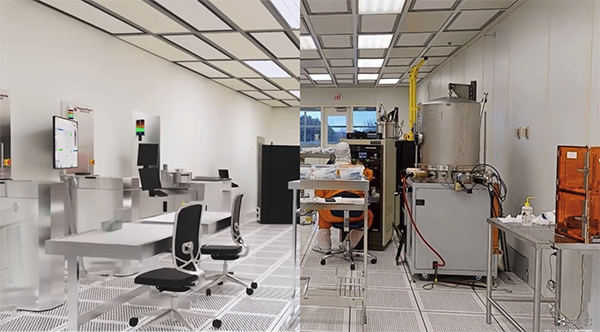Virtual training accelerates semiconductor workforce skill development to bridge gaps in U.S. manufacturing.
By Mahesh Deshpande, Senior Director, High Tech Industry Business Consulting, Dassault Systèmes
With technology giants expanding U.S. semiconductor production, the Semiconductor Industry Association projects 67,000 positions could go unfilled by 2030, with technicians representing the largest gap.
The challenge extends beyond recruitment. Today’s semiconductor manufacturing requires workers skilled in digital technologies, virtual simulation, and AI-driven processes. While traditional training methods struggle to keep pace, virtual technologies offer a solution. By using digital twin technology, immersive learning environments, and advanced simulation tools, we can develop the technical workforce needed to sustain semiconductor innovation.
Manufacturing technicians in semiconductor facilities face increasingly complex responsibilities. They maintain and troubleshoot equipment worth hundreds of millions of dollars. Even brief downtime can impact production significantly. These technicians must master cleanroom protocols, equipment operation, and preventive maintenance while adapting to rapid technological change.
Traditional training approaches, which rely heavily on classroom instruction and limited hands-on experience, present several constraints. First, access to actual fabrication equipment for training is restricted due to production demands and cost considerations. Second, the risk of error in a live manufacturing environment makes it impractical for new technicians to learn through direct experimentation. Third, the accelerating pace of technological advancement means training materials and methods quickly become outdated.
The stakes are particularly high as the industry expands.
Virtual technologies are transforming how technicians learn and practice complex semiconductor manufacturing processes. Using virtual twin technology to create precise replicas of physical manufacturing environments enables technicians to train in risk-free settings that mirror actual cleanroom conditions. These virtual environments replicate everything from basic cleanroom gowning procedures to complex equipment operations.
The applications are practical and immediate. Technicians can practice emergency shutdown procedures without risking equipment damage. They can rehearse maintenance routines repeatedly until achieving mastery, and experiment with different troubleshooting approaches – activities impossible in a production environment. Spatial computing applications, such as virtual reality headsets, allow trainees to explore and navigate cleanroom spaces and interact with equipment in hyper-realistic environment — building muscle memory and procedural knowledge before entering the actual facility.
Beyond individual training scenarios, simulation technology enables systematic analysis of manufacturing processes. Technicians learn not just how to operate equipment, but how their actions affect the entire production flow. This systems-level understanding is crucial as semiconductor manufacturing becomes increasingly automated and interconnected. Machine learning algorithms integrated into these virtual environments can adapt to each trainee’s progress, identifying areas needing additional practice and adjusting the complexity of scenarios accordingly.
The evolution in training technology necessitates a parallel evolution in semiconductor education curricula. Universities and technical programs must integrate digital skills alongside traditional semiconductor fundamentals. Modern technicians need proficiency in three key areas: virtual twin interfaces for equipment monitoring, simulation software for process optimization, and data analysis tools for predictive maintenance.
This curriculum transformation is already underway. Leading semiconductor programs like Purdue University’s now incorporate virtual cleanroom training from day one. Students can practice gowning procedures and cleanroom protocols in simulated environments before entering physical facilities. They learn equipment operation through digital interfaces that replicate actual manufacturing tools. Most importantly, they develop troubleshooting skills through scenario-based learning that spans both virtual and physical domains.
The integration of AI and machine learning into manufacturing processes requires technicians to understand not just mechanical systems, but also data patterns that indicate potential equipment issues. Successful programs teach students to interpret sensor data, recognize anomaly patterns, and make data-driven decisions about maintenance scheduling. This combination of physical skills and digital literacy creates technicians who can adapt to rapid technological change.

The implementation of virtual training systems marks a beginning rather than an endpoint in workforce development. Early data from semiconductor manufacturers shows that technicians trained in virtual environments reach competency 40% faster than those trained through traditional methods. These gains become crucial as facilities scale up operations
Virtual training platforms offer another key advantage: rapid adaptation to new manufacturing processes. When manufacturers introduce new equipment or modify procedures, training modules can be updated within days rather than the weeks or months required to revise traditional training programs. This flexibility helps maintain workforce readiness as semiconductor manufacturing technology evolves.
Success of domestic semiconductor expansion hinges not just on producing more technicians, but on preparing them more effectively. Virtual training environments, combined with traditional hands-on experience, create technicians who understand both the physical and digital aspects of semiconductor manufacturing. This comprehensive preparation ensures that as U.S. semiconductor manufacturing expands, the workforce will be ready to maintain America’s competitive edge in this critical industry.
The semiconductor industry has reached a pivotal moment. As technology giants invest heavily in expanding domestic manufacturing, long-term success hinges on training a new generation of technicians capable of bridging the physical work environment with digital training. Virtual training technology offers a proven path forward, enabling faster skill development, more comprehensive learning, and adaptable training programs that evolve with manufacturing technology.
The case for virtual training can also be made for occupational retraining and cross-training. As the gap in the worker pool remains significant, the domestic semiconductor industry will have to recruit technicians from other manufacturing industries (e.g. auto). Further, to maintain staffing levels and flexibility, fab owners may cross train the existing technicians in responsibilities beyond their assigned process area or equipment or discipline.
Virtual twin-based worker retraining can reduce the onboarding time, and virtual twin based cross training can reduce the equipment downtime and enhance problem solving skills.
The evidence is clear: when virtual training tools are integrated into technical education, we create better-prepared semiconductor technicians in less time. As domestic semiconductor manufacturing expands, this advantage becomes critical. Educational institutions and manufacturers that embrace these tools today will play a decisive role in strengthening U.S. semiconductor manufacturing capability – and by extension, our technological independence – for decades to come.

About the Author:
Mahesh leads the semiconductor ecosystem engagement for Dassault Systemes. He drives the “Chips to Networks” Virtual Twin advocacy efforts in the electronics space as the shift to system level solutions continues. As Senior Director of High Tech Industry Business Consulting, he has consulted worldwide for leading companies from Semiconductor & Module providers to Consumer Electronics & Telecom Network OEMs in their engineering and manufacturing transformations for past 12 years.
In this episode, I sat down with Beejan Giga, Director | Partner and Caleb Emerson, Senior Results Manager at Carpedia International. We discussed the insights behind their recent Industry Today article, “Thinking Three Moves Ahead” and together we explored how manufacturers can plan more strategically, align with their suppliers, and build the operational discipline needed to support intentional, sustainable growth. It was a conversation packed with practical perspectives on navigating a fast-changing industry landscape.